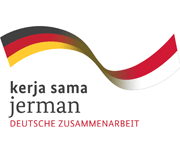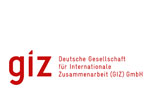
"We have been taught from generation to generation through our traditions to maintain and preserve our forests. But now, why it is so difficult and takes a long process to get a legitimate right to manage our forests? Please help us ". As expressed by Saleh Wang, the Head of Setulang village.
The village government of Setulang assisted by the Forest Service of Malinau District and GIZ-FORCLIME has proposed the protection forest area (the local language: Tane 'Olen) as their Village Forest. Village forest is a state forest that is managed by the Village people for the wellbeing of the village, considering all forest functions. A proposal for village forest development has been prepared and submitted to the Regent of Malinau. In December 2011, the Regent has issued a recommendation letter for the Setulang proposal and forwarded to the Minister of Forestry.
It is recognized by the villagers that in order to get the management rights of a village forest up to the implementation stage is a long process. Nevertheless, the recommendation letter from the Malinau Regent is one of the important steps and warmly welcomed by the government of the Setulang village. Going through the process, stage by stage, the dream of the Setulang people is to obtain certainty and access rights to manage their forest by themselves will be accomplished. It is expected that in early 2012 the Ministry of Forestry will conduct a field visit to verify the proposal and issue a letter of Working Area Determination for the Setulang Village Forest. Drs. Ihin Surang, Head of the Conservation Unit of the Forest Service of Malinau, hopes that Setulang’s efforts in obtaining the rights to management their forest as well as their efforts in conserving the forests will be serve as an example for other villages in Malinau.  Setulang village in a glance
Setulang village in a glance
Setulang village is located in the district of Malinau, East Kalimantan. It has a total area of 11,800 Ha its altitude ranging from 70 m to 500 m above sea level. The village lays on the banks of the River Malinau surrounded by hills and separated by a district road connecting the nearby villages. The village can be reached from the district capital in 1 to 1.5 hours by boat or by car on a paved and gravel road.
The village has 931 inhabitants living in 236 household. The majority of the dwellers are Dayak Kenyah Oma Lung being Christians and still adheres to traditional customs. Main livelihood of the locals is farming. The village is led by the head of the village government that governs the village. Additionally; there is also a customary authority which administers traditional norms and customs in the village.
The way of life of Setulang people is still ruled by local wisdom, as their life is blended with the natural environment. The Setulang people have been applying customary laws to manage and preserve their protected forest (Tane 'Olen). For them, forests are considered as future savings for communities and future generations. In addition to ecological functions, they wisely use forest resources for subsistence purposes, such as timber for constructing house, medicinal plants, hunting animals and others. Considering the high commitment and efforts of Setulang Village in conserving its forests, the Government of Indonesia in 2003 awarded the Kalpataru prize naming the village an environmental savior. Prior to receiving assistance from GIZ FORCLIME, Setulang got support from CIFOR.
According to results of Landsat imagery interpretation 2007 by the Balai Pemantapan Kawasan Hutan (BPKH) Region IV Samarinda, Tane 'Olen at Setulang village covers of ± 5,314 ha, which consists of primary forest (± 829.43 Ha), secondary forest (4,407.49 Ha), and undergrowth (± 75.69 Ha). Forest vegetation is dominated by Dipterocarps species, such as meranti (Shorea sp), keruing (Dipterocarpus sp), Resak (Vatika sp), lime (Dryobalanops sp), tengkawang (Shorea pinanga) and other species such as nyatoh (Palaquium sp), agathis (Agathis sp), the forest onion (Scorodocarpus sp), ironwood (Eusideroxylon zwageri) and other types. While the undergrowth plant species includes ferns (Pteridofita sp), rattan (Calamus sp), lichen (Briofita), fern (Cycas sp), and ephifit as well as several species of orchids. Additionally, there are many other species of flora. Animals include: deer (Cervus timorensis), deer/coney (Tragulus javanicus), wild boar (Sus barbatus), sun bear (Helarctos malayanus), clouded leopard, porcupine (Hystix brachhyura), jungle cat (Felis bengalensis) , some primates such as gibbons (Hylobates molach), reptiles (lizards and various types of snakes) and various types of fish (Pisces). Groups of birds (Aves) such as hornbills (Buceros rhinocerros, Rhinoplax vigil), kwau (Argusianus argus), peacock (Pavo muticus) and others.
For more info, please contact:
Edy Marbyanto
Senior Adviser
edy.marbyanto@giz.de






